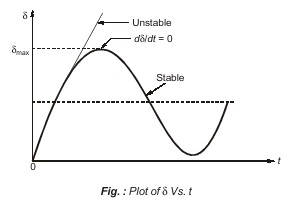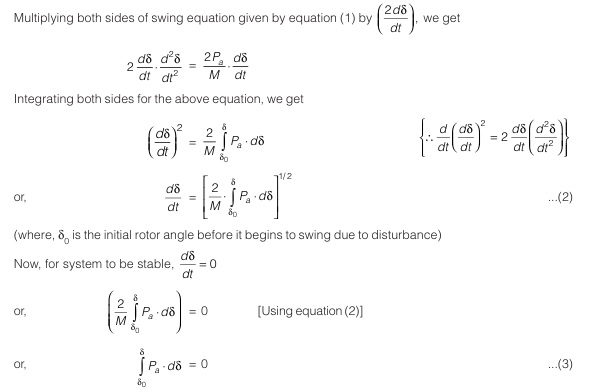Equal Area Criteria
For single machine system and infinite bus-bars a method known as “equal area criterion of stability” is employed. This method of stability study eliminates the calculations of swing curves which saves a considerable amount of work. This method is not applicable to multi-machine system and is applicable to only a single machine connected to infinite bus.
The principle of equal area criteria consists of the basis that when δ oscillates around the equilibrium point with constant amplitude, transient stability will be maintained.
Consider the swing equation,
![]()
If the system is unstable δ continues to increase with respect to time and the machine losses synchronism. On the other hand, if the system is stable, δ(t) performs oscillations whose amplitude decreases in actual practice because of damping terms. These situations are shown below in figure.

Practically, the response δ(t) in a power system generally falls in the two broad categories as shown above in figure. For a stable system, in the first swing, δ goes to a maximum and starts to reduce.
Hence, the system is stable if at some time dδ/dt = 0 and the system is unstable if at some time dδ/dt > 0 (generally t > 1 sec).
Conclusion
Equation (3) indicates that the system is stable if the area under Pa (accelerating power) – δ curve reduces to zero at some value of δ. In other words, for the system to be stable, during transient the positive area (accelerating area) under Pa – δ curve must be equal to the negative area (decelerating area) and hence the name “equal-area” criterion of stability.
<< Previous | Next >>
Must Read: What is Power Generation?

